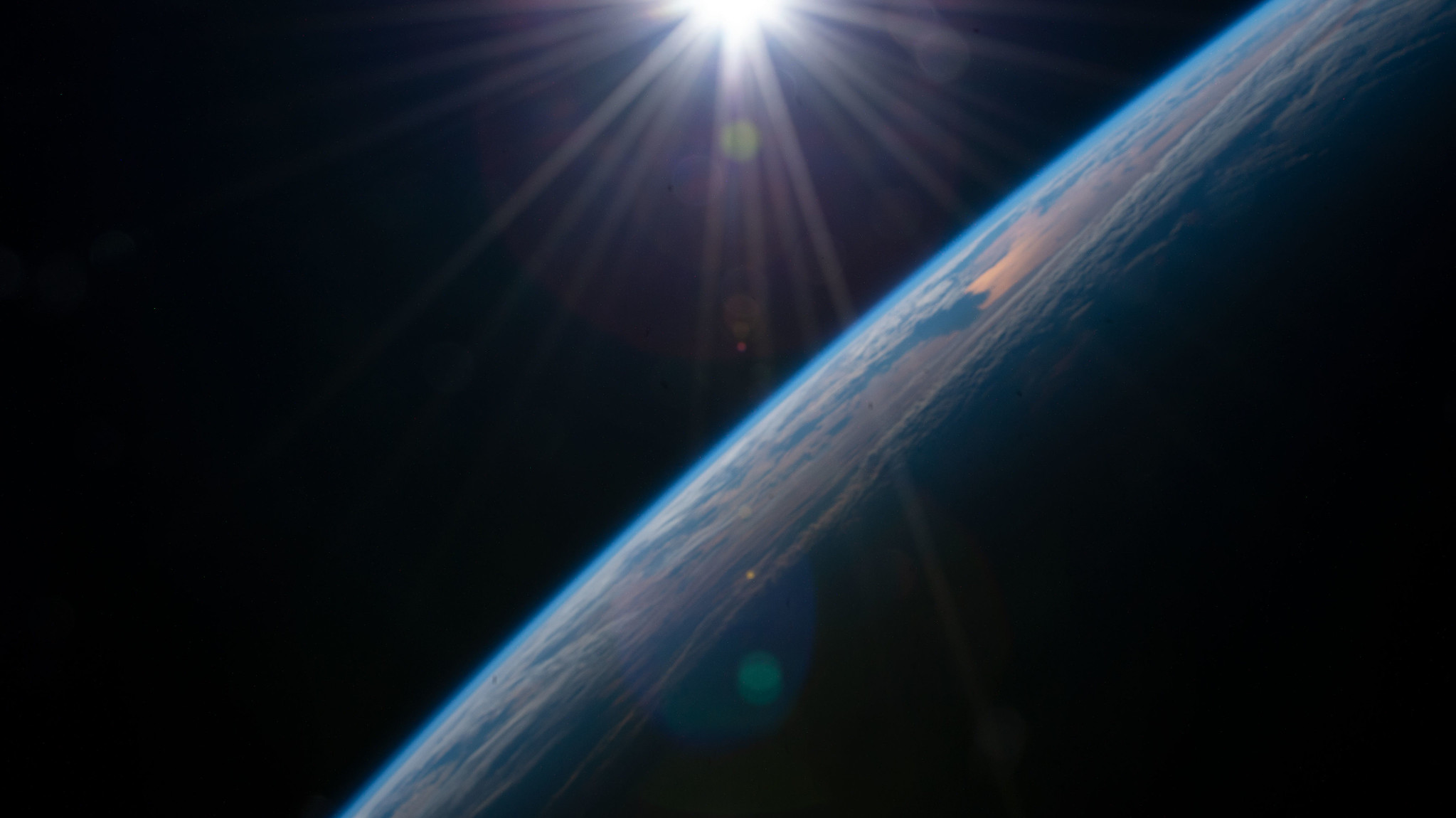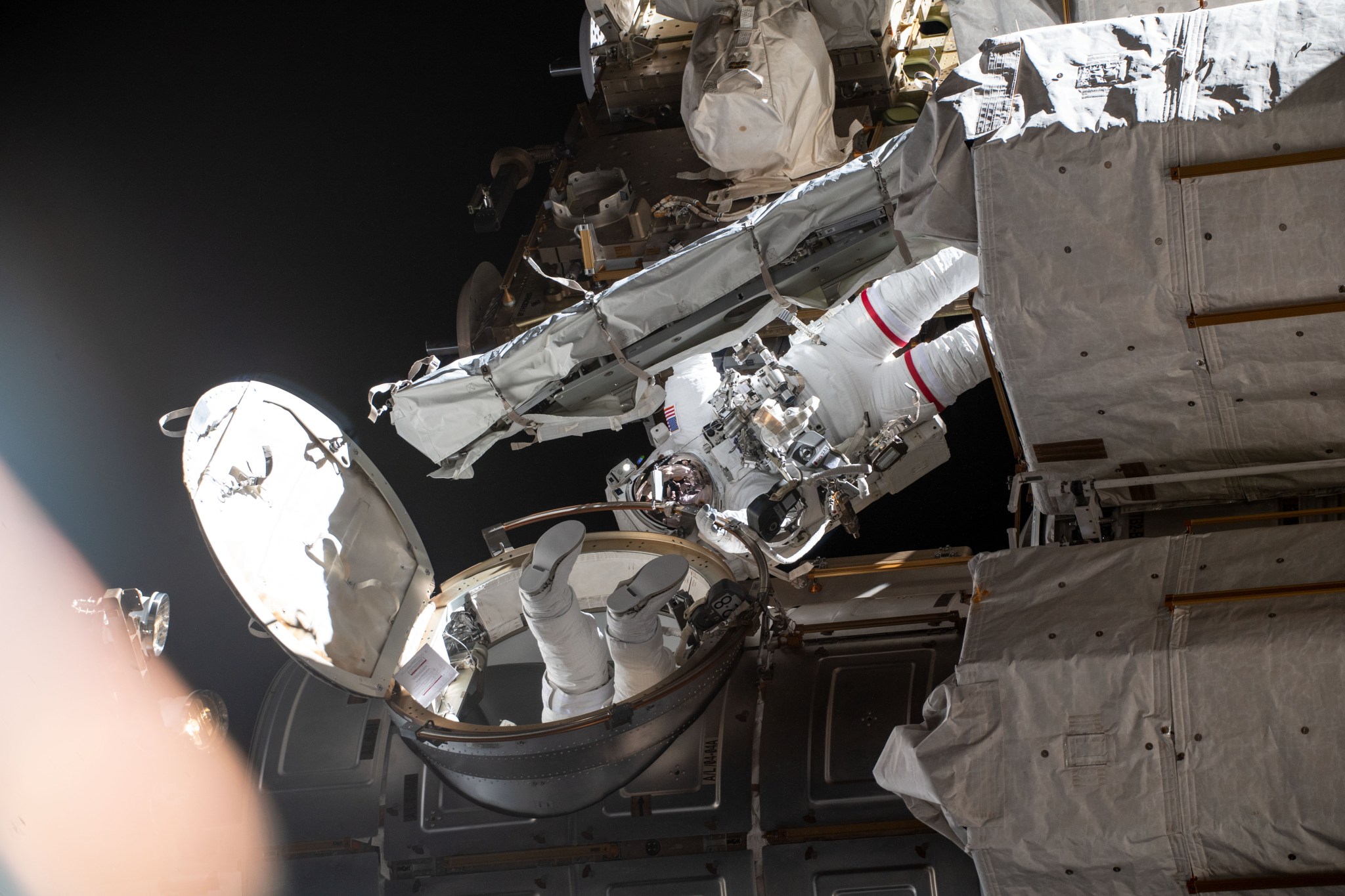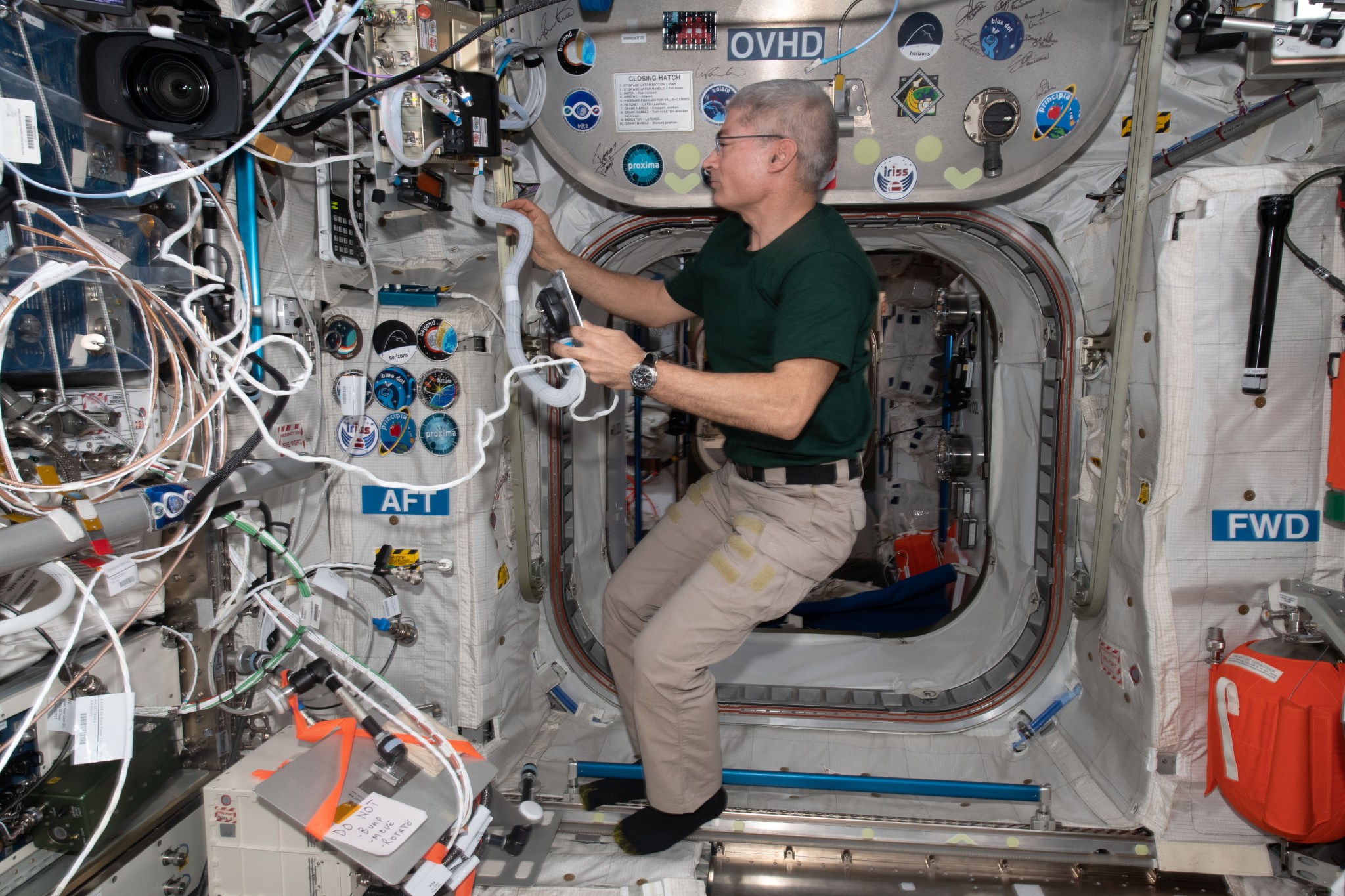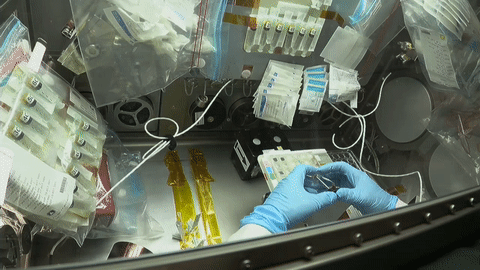[Lea la versión en español de este artículo]
Crew members aboard the International Space Station conducted scientific investigations during the week of March 14 that included analyzing changes in arteries and muscle tone during spaceflight and conducting a ham radio session. NASA astronauts Kayla Barron and Raja Chari conducted a 6 hour 54 minute spacewalk on March 15 to continue preparations for installing new solar arrays that will increase the power available on the space station for scientific research and daily operations. On Tuesday, March 15, NASA astronaut Mark Vande Hei broke the record for the most consecutive days in space by an American explorer.
The space station, continuously inhabited by humans for 21 years, has supported many scientific breakthroughs. A robust microgravity laboratory with dozens of research facilities and tools, the station supports investigations spanning every major scientific discipline, conveying benefits to future space exploration and advancing basic and applied research on Earth. The orbiting lab also provides a platform for a growing commercial presence in low-Earth orbit that includes research, satellite services, and in-space manufacturing.
Here are details on some of the microgravity investigations currently taking place:
Arteries and aging
Some aging-like changes occur more quickly in space station crew members than they do on Earth. Astronauts experience changes to their carotid arteries, for example, which could present a significant health risk on future long-duration space missions. Vascular Aging, a Canadian Space Agency (CSA) investigation, collects data on vascular changes in astronauts using ultrasound images, blood samples, and wearable sensors. Results could support development of ways to reduce the potential health risks to crew members as well as guide prevention measures and treatments for the effects of aging on Earth. During the week, crew members collected multiple data points for the investigation.
Muscles and microgravity
Myotones, an investigation from ESA (European Space Agency), observes properties of muscles such as tone and stiffness during long-term spaceflight. Research suggests that these decrease during spaceflight, particularly in muscles most important for postural support and movement such as running and walking. Inflight exercise seems to improve or even recover these muscle changes. Results from this investigation could improve understanding of human resting muscle tone and lead to the development of new countermeasures for muscle changes on future space missions as well as alternative rehabilitation treatments on Earth. Crew members recorded several measurements for the study during the week.
Q&A with an astronaut
During the week, crew members conducted an ISS Ham Radio session with the Kids Star Club Sayama in Sayama, Japan. Before the event, the club held an amateur radio licensing seminar and provided lessons about radio waves, electricity, and space for the youth members. ISS Ham Radio engages students, teachers, parents, and other members of the community in direct communication with astronauts via ground-based ham radio units. This experience helps inspire interest in science, technology, engineering, and math.
Other investigations involving the crew:
- UNIGLO tests how microgravity affects a module for processing various types of complex glasses. This investigation could help establish additional manufacturing capabilities in space and lead to development of novel fibers for optical communication and lasers in a variety of applications in space and on Earth.
- SQuARE studies objects and built spaces and how crew members use them over time. Results could contribute to better design for future spacecraft and habitats.
- Space Biofilms characterizes the structure and gene expression of biofilms that form in space by analyzing a fungal species grown on different materials. Biofilm formation can cause equipment malfunction and human illnesses and could be a problem on future long-term human space missions.
- EasyMotion from ESA tests a suit worn during pre- and postflight exercise that provides electro-myo-stimulation or electric current that causes muscle contractions. It could save crew time and improve outcomes of inflight exercise on future space missions and in healthy populations on Earth.
- NutrISS, an investigation from ESA, periodically assesses body composition and measures long-term energy balance modification over time. Results may improve understanding of the mechanisms behind body composition changes during spaceflight and help lead to ways to mitigate any negative effects of those changes.
- Food Physiology examines the effects of an enhanced spaceflight diet on immune function, the gut microbiome, and nutritional status indicators to document how dietary improvements may enhance adaptation to spaceflight.
- Touching Surfaces, an ESA investigation, tests antimicrobial surfaces to help determine those most appropriate for future spacecraft and habitats as well as for terrestrial applications such as public transportation and clinical settings.
For daily updates, follow @ISS_Research, Space Station Research and Technology News or our Facebook. Follow ISS National Lab for information on its sponsored investigations. For opportunities to see the space station pass over your town, check out Spot the Station.
John Love, ISS Research Planning Integration Scientist
Expedition 66



























